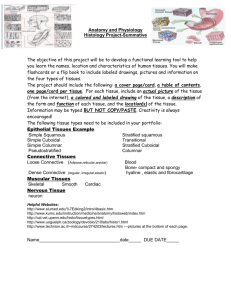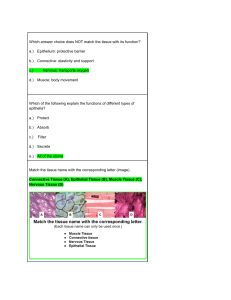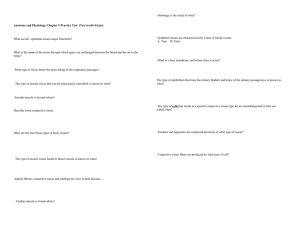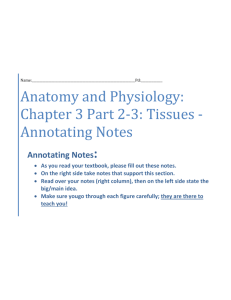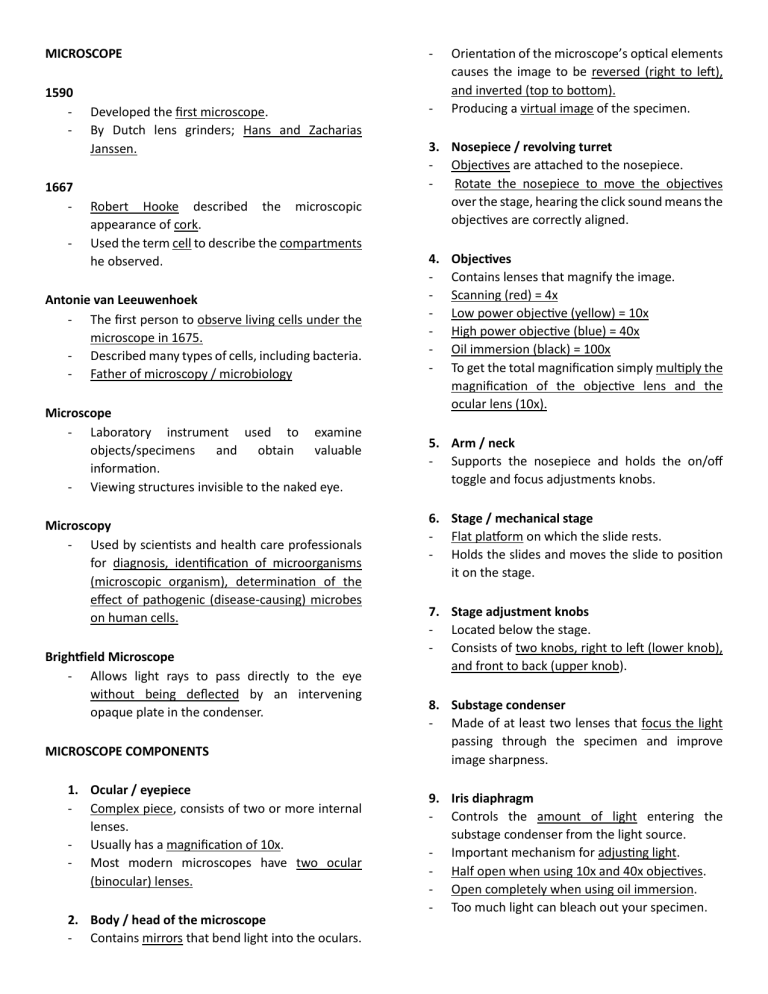
MICROSCOPE - 1590 - - 1667 - Developed the first microscope. By Dutch lens grinders; Hans and Zacharias Janssen. Robert Hooke described the microscopic appearance of cork. Used the term cell to describe the compartments he observed. Antonie van Leeuwenhoek - The first person to observe living cells under the microscope in 1675. - Described many types of cells, including bacteria. - Father of microscopy / microbiology Microscope - Laboratory instrument used to examine objects/specimens and obtain valuable information. - Viewing structures invisible to the naked eye. Microscopy - Used by scientists and health care professionals for diagnosis, identification of microorganisms (microscopic organism), determination of the effect of pathogenic (disease-causing) microbes on human cells. Brightfield Microscope - Allows light rays to pass directly to the eye without being deflected by an intervening opaque plate in the condenser. MICROSCOPE COMPONENTS 1. Ocular / eyepiece - Complex piece, consists of two or more internal lenses. - Usually has a magnification of 10x. - Most modern microscopes have two ocular (binocular) lenses. 2. Body / head of the microscope - Contains mirrors that bend light into the oculars. Orientation of the microscope’s optical elements causes the image to be reversed (right to left), and inverted (top to bottom). Producing a virtual image of the specimen. 3. Nosepiece / revolving turret - Objectives are attached to the nosepiece. Rotate the nosepiece to move the objectives over the stage, hearing the click sound means the objectives are correctly aligned. 4. - Objectives Contains lenses that magnify the image. Scanning (red) = 4x Low power objective (yellow) = 10x High power objective (blue) = 40x Oil immersion (black) = 100x To get the total magnification simply multiply the magnification of the objective lens and the ocular lens (10x). 5. Arm / neck - Supports the nosepiece and holds the on/off toggle and focus adjustments knobs. 6. Stage / mechanical stage - Flat platform on which the slide rests. - Holds the slides and moves the slide to position it on the stage. 7. Stage adjustment knobs - Located below the stage. - Consists of two knobs, right to left (lower knob), and front to back (upper knob). 8. Substage condenser - Made of at least two lenses that focus the light passing through the specimen and improve image sharpness. 9. Iris diaphragm - Controls the amount of light entering the substage condenser from the light source. - Important mechanism for adjusting light. - Half open when using 10x and 40x objectives. - Open completely when using oil immersion. - Too much light can bleach out your specimen. 10. Iris diaphragm lever - Opens and closes to increase and decrease light from the light source. 11. Fine focus adjustment knob - Raises and lowers the stage in very small increments. - Brings the image into sharp focus. 12. Coarse focus adjustment knob - Moves the stage up and down by larger increments and brings the image into focus. 13. Light intensity control / rheostat - Increases and decreases light output from the light source. - Decrease light output when using lower magnification and with unstained specimens. - Maximize light output when using oil immersion with stained slides. 14. Light source - Illuminator, halogen bulb that produces light. 15. Base - Holds the illuminator and supports the rest of the microscope. 16. Aperture - Hole on the microscope stage. Care and Handling 1. Lens care - Cleaning tissues, lint-free, free of abrasive grit. 2. Solvents - Cleaning fluids recommended by manufacturers. 3. Oculars - Lens tissue and blow off any excess with an air syringe or gas canister. 4. Objectives - Lens tissue moistened with the recommended cleaning fluid or an accepted alternative solvent. TISSUES - Group of cells with similar structure and function. 4 Primary Types 1. - EPITHELIUM Cells fit closely together. One free surface. Lower surface is bound by a basement membrane. - Avascular (no blood supply) - Regenerate easily if well nourished. Different Areas: - Body coverings - Body linings - Glandular tissue Functions: - Protection (skin) - Absorption - Filtration (kidneys) - Secretion (mucous glands, sweat glands) Classification: 1. Number of cells - Simple (one layer) - Stratified (more than one layer) 2. Shape of cells - Squamous (flattened) - Cuboidal (cube-shaped) - Columnar (column-like) A. SIMPLE EPITHELIUM 1. Simple squamous - Single layer of flat cells, forms membranes - Lines body cavities, lines lungs and capillaries - Lining of blood vessels and heart, lymphatic vessels, alveoli of the lungs, portion of the kidney tubules, lining of serous membranes of the body cavities. (pleural, pericardial, peritoneal) 2. Simple cuboidal - Single layer of cube-like cells, common in glands and their ducts. - Forms walls of kidney tubules, covers the ovaries. - Choroid plexuses of the brain, lining of terminal bronchioles of the lungs, surfaces of the ovaries. 3. Simple columnar - Single layer of tall cells - Includes goblet cells (produces mucus), lines digestive tract. - Bronchioles of lungs, auditory tubes, uterus, uterine tubes, stomach, ventricles of the brain. 4. Pseudostratified (pseudostratified ciliated columnar) - Single layer but some cells are shorter than others. - Looks like a double cell layer, sometimes ciliated (respiratory tract) May function in absorption or secretion. Lining of nasal cavity, nasal sinuses, auditory tubes, pharynx, trachea, bronchi of lungs. B. STRATIFIED EPITHELIUM 1. Stratified squamous - Cells at the free edge are flattened. - Found as a protective covering where friction is common. - Skin, mouth, esophagus 2. Stratified cuboidal - Two layers of cuboidal cells, sweat glands ducts, ovaria follicular cells, salivary gland ducts. 3. Stratified columnar - Surface cells are columnar, cells underneath vary in size and shape. - Mammary gland ducts, larynx, portion of the male urethra. 4. Transitional epithelium - Shape of cells depends upon the amount of stretching (combination of cuboidal and columnar) - Lining of urinary bladder, ureters, and superior urethra. C. GLANDULAR EPITHELIUM Gland, one or more cells that secrete a particular product. 1. Endocrine gland - Ductless, secretions are hormones. 2. Exocrine gland - Empty through ducts to the epithelial surface, including sweat and oil glands. 2. CONNECTIVE TISSUE - Diverse primary tissue, makes up part of every organ in the body. - Consists of cells separated from each other by abundant extracellular matrix. Classification: - Variation in blood supply (vascularized, poor blood supply / avascular) - Extracellular matrix, non-living material that surrounds living cells. 2 Main elements of extracellular matrix 1. Ground substance (mostly water along adhesion proteins and polysaccharide molecules. 2. Fibers (produced by the cells) - Collagen fibers - Elastic fibers - Reticular fibers Functions: - Enclosing and separating other tissues. - Connecting tissues to one another (tendons, ligaments) - Supporting and moving parts of the body (bones, cartilages) - Storing compound (adipose tissues-fat, bonescalcium and minerals) - Cushioning and insulating (adipose tissues) - Transporting (blood-gases, nutrients, enzymes, hormones, and cells) - - 1. Bone (osseous tissue) Composed of bone cells in lacunae (cavities), hard matric of calcium salts Large numbers of collagen fibers Protect and support the body 2. Hyaline cartilage Most common cartilage Composed of abundant collagen fibers, rubbery matrix. Entire fetal skeleton 3. Elastic cartilage Provides elasticity Supports the external ear 4. Fibrocartilage Highly compressible Forms cushion-like discs between vertebrae In between the spine 5. Dense connective tissue Main matrix element is collagen fibers Cells are fibroblasts (produces collagen and other fibers) Tendons (muscle to bone), ligaments (bone to bone) 6. Areolar connective tissue Most widely distributed connective tissue Soft, pliable tissue, contains all fiber types, can soak up excess fluid. Beneath the dermis layer 7. Adipose tissue Contains large lipid deposits - - Insulates the body, protects some organs, site of fuel storage Commonly known as body fat 8. Reticular connective tissue Delicate network of interwoven fibers Forms stroma (internal supporting network) of lymphoid organs (lymph nodes, spleen, bone marrow) 9. Blood Blood cells surrounded by fluid matrix Fibers are visible during clotting Transport vehicle for materials Connects body systems, removes waste products 3. MUSCLE TISSUE - Produce movement - - - 4. - 1. Skeletal muscle Controlled voluntarily, cells attach to connective tissue Cells are striated, more than one nucleus and peripherally located (multinucleated / polynuclear) Attached to bones (tendons) Long, cylindrical cells (1-4 cm in length, 10-100 nanometers in diameter) 2. Cardiac muscle Found only in the heart Cells attached to other cardiac muscle cells at intercalated disks. Cells are striated, one nucleus per cell and centrally located Cylindrical cells (100-500 nanometers in length, 12-20 nanometers in diameter) involuntary 3. Smooth muscle Involuntary muscle, surrounds hollow organs Attached to other smooth muscle cells No visible striations, one nucleus per cell and centrally located Stomach and intestines Spindle-shaped cells (15-200 nanometers in length, 5-8 nanometers in diameter) NERVOUS TISSUE Neurons and nerve support cells Send impulses to other areas of the body Irritability, conductivity TISSUE DAMAGE AND INFLAMMATION Inflammation - Response that occurs when tissues are damaged. - Major manifestations; redness, heat, swelling, pain, and disturbed function Inflammatory response - Defense mechanism that mobilizes the body’s immune cells to isolate and destroy microorganisms and remove foreign materials and damaged cells. - Allows tissue repair to occur Tissue repair 1. Regeneration - Replacement of destroyed tissue by the same kind of cells 2. Fibrosis - Repair by dense fibrous connective tissue (scar tissue) 3. Determination of method - Type of tissue damaged - Severity of the injury Events in Tissue Repair - Capillaries become very permeable (introduce clotting proteins, wall off injured area) - Formation of granulation tissue - Regeneration of surface epithelium Regeneration of tissues 1. Tissues that regenerate easily - Epithelial tissue - Fibrous connective tissue and bone 2. Tissues that regenerate poorly - Skeletal muscle 3. Tissues that are replaces largely with scar tissue - Cardiac muscle - Nervous tissue with the brain and spinal cord Developmental aspects of tissue 1. Epithelial tissue arises from all primary germ layers (ectoderm, mesoderm, endoderm) 2. Muscle and connective tissue arise from the mesoderm 3. Nervous tissue arise from the ectoderm 4. With old age there is a decrease in mass and viability in most tissues.




